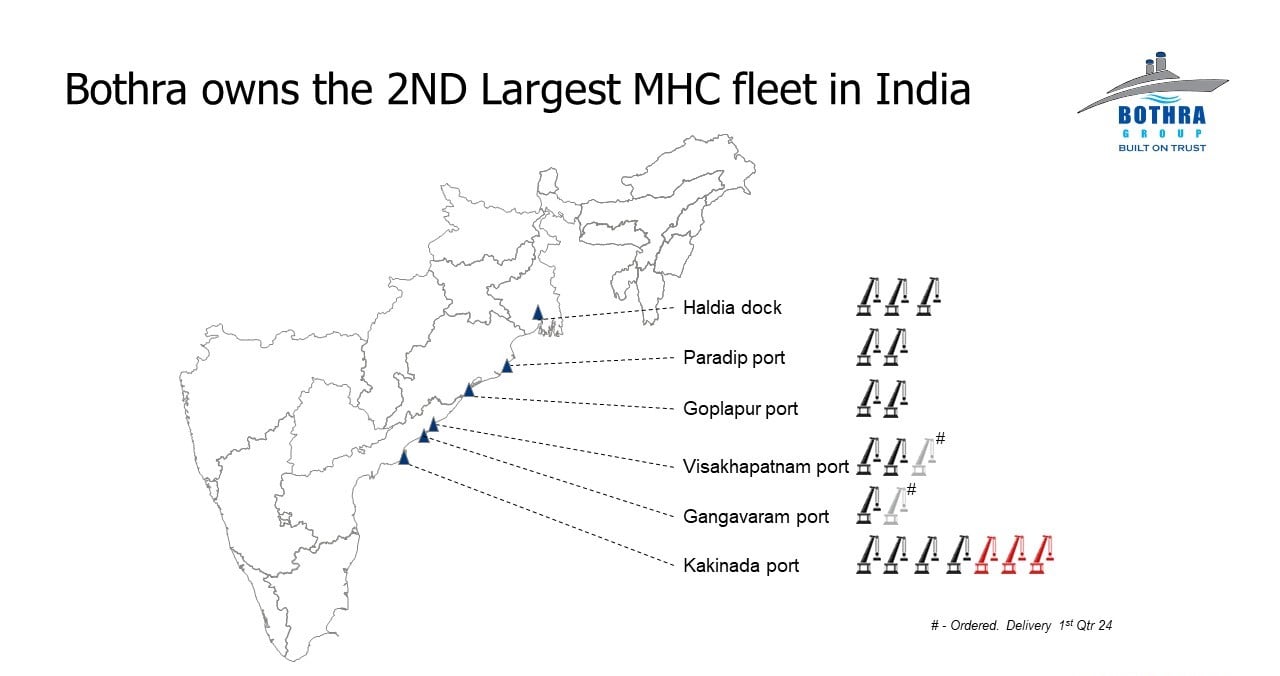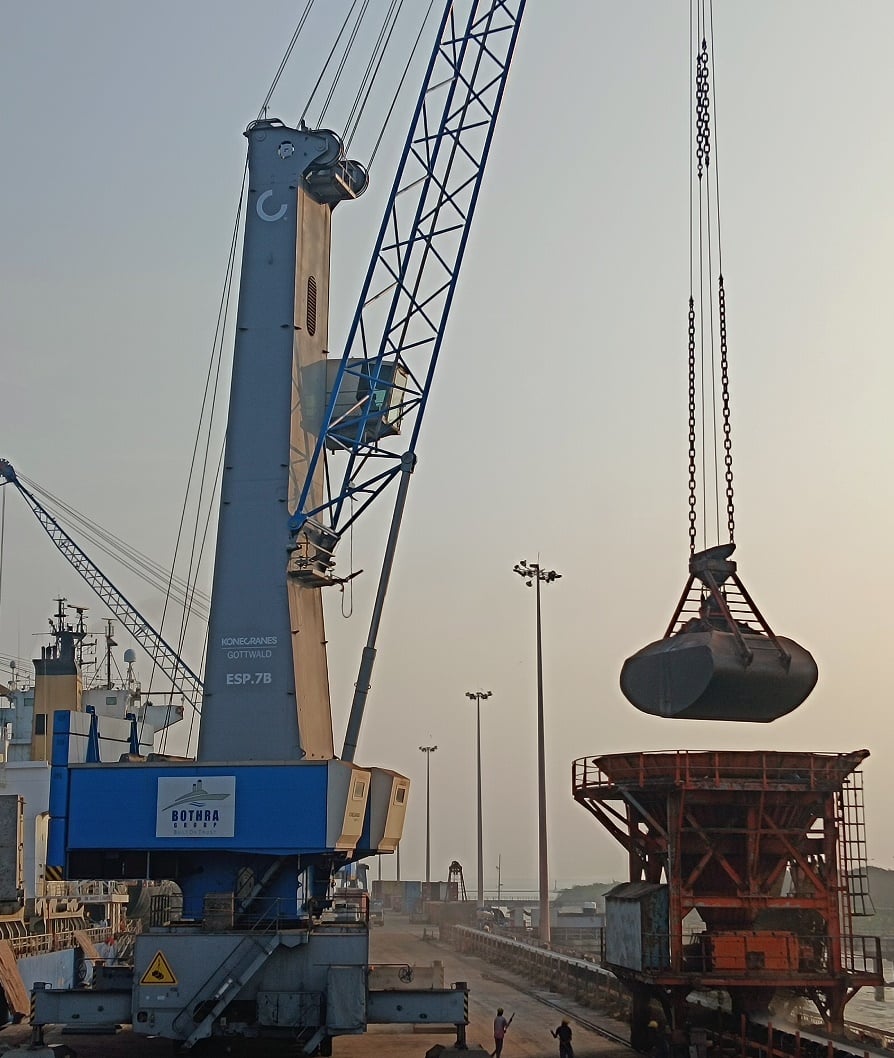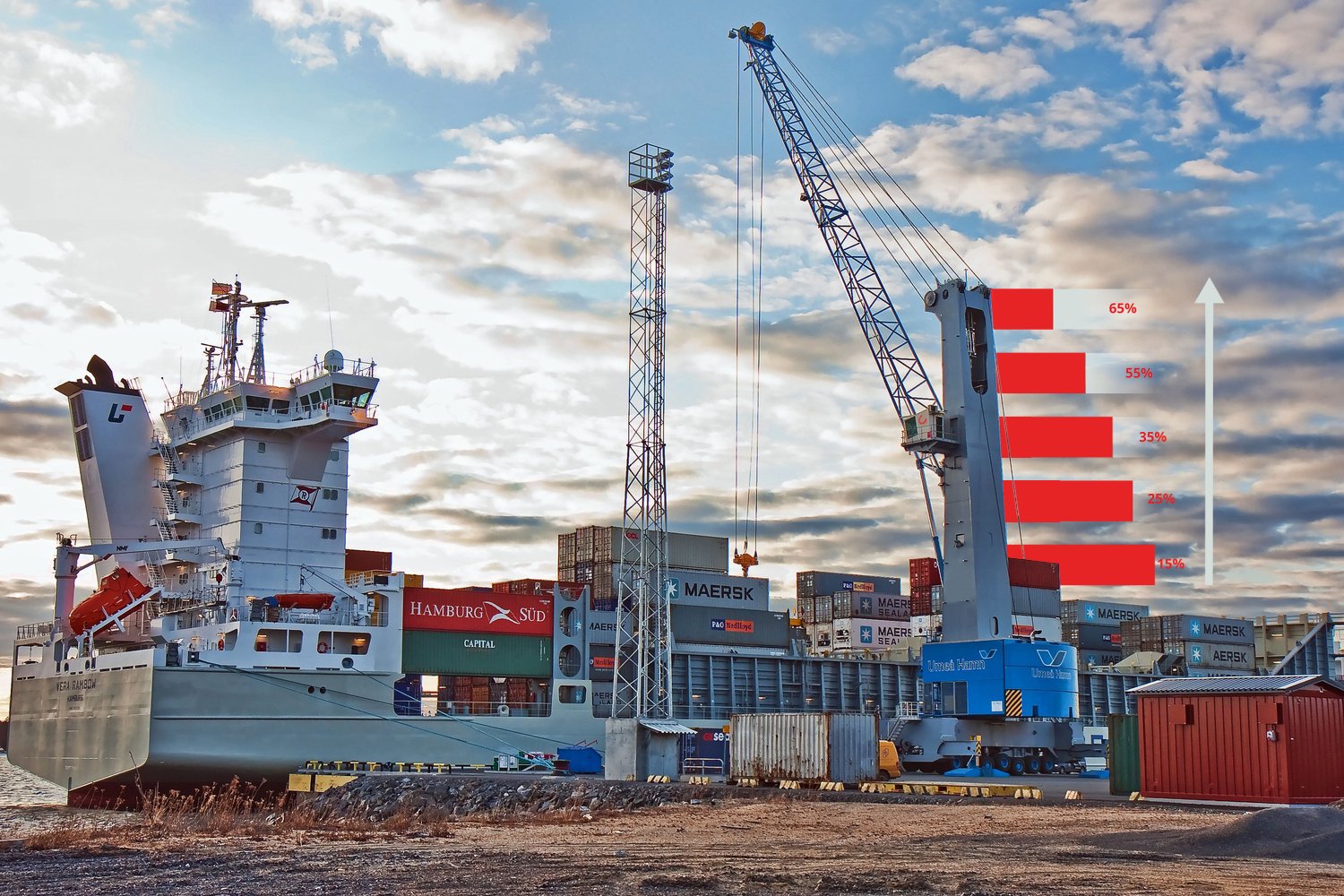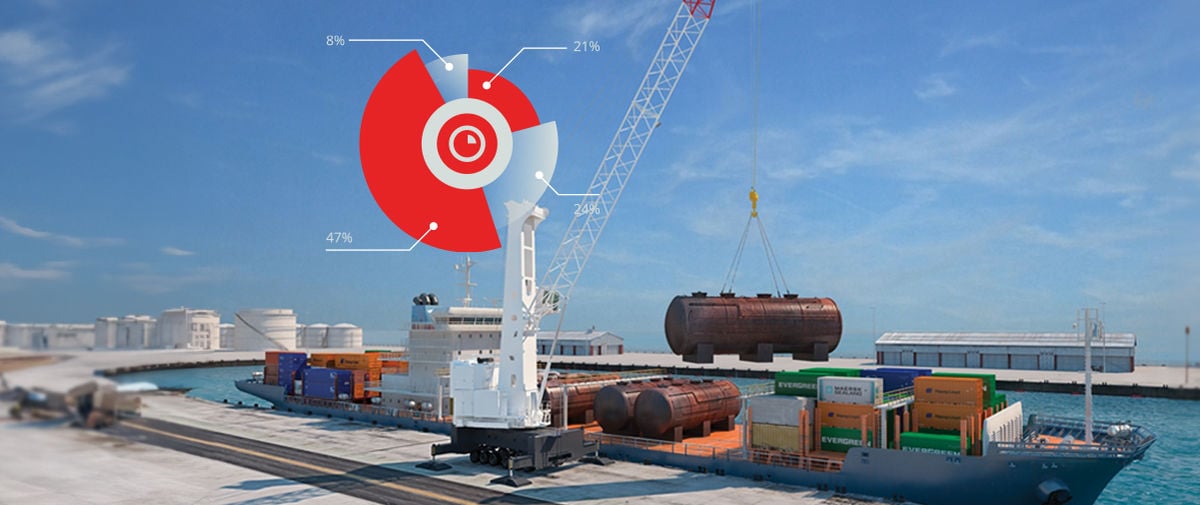Data on equipment performance can indicate when it’s time to repair or replace parts, so that downtime can be avoided. We look at Konecranes’ predictive-maintenance offering and how a customer in India is transforming its capabilities with the technology.
As crane operators know, there are several different strategies for maintaining equipment.
At the one end of the scale, you can simply wait for a part to fail and then replace it. The downside to this reactive approach is a high risk of operational impact. If parts are not immediately available, a crane could sit idle for weeks or months.
At the other end of the scale is the preventive strategy, which entails periodically replacing different parts. While this approach is certainly thorough, it may result in equipment being replaced earlier than warranted. This means unnecessary costs.
The compromise between these two extremes is the predictive approach. By monitoring data on vibrations, heat, oil contamination and other parameters, it’s possible to predict the need for equipment replacement with a high degree of accuracy.
“Predictive maintenance seems to be a sweet spot between the reactive and preventive approaches,” says Dr Klaus Woeste, Regional Sales and Service Director Oceania, Port Solutions, Konecranes.
“If we look at the rotational parts on a mobile harbor crane – such as motors, gear boxes and hoists – Konecranes has the data to inform on the performance of this equipment over the mid- and longer-term. We can identify fairly early on that something is wrong with a certain part,” explains Woeste.
Crane operator in India transforms maintenance
One of the Konecranes customers benefi ting from this predictive approach is Bothra Shipping Services in India. The terminal operator and logistics service provider operates the country’s second-largest fleet of mobile harbor cranes, including three all-electrical units of the Konecranes ESP.7 series fitted with a predictive-maintenance solution.
ting from this predictive approach is Bothra Shipping Services in India. The terminal operator and logistics service provider operates the country’s second-largest fleet of mobile harbor cranes, including three all-electrical units of the Konecranes ESP.7 series fitted with a predictive-maintenance solution.
“Very often we were only reacting when potentially close to a failure, or once a breakdown had happened. If you do not have the right spare parts in your inventory, then you face a serious risk of downtime. This may result in damages and other penalties,” explains Rahil Sahu, General Manager at Bothra Shipping Services.
“We tried following OEM recommendations on equipment replacement, yet we still saw discrepancies between this guidance and the failures. Our inventory sometimes included parts for a failure we thought would happen but did not materialize. We were therefore very excited to introduce the predictive-maintenance capability from Konecranes,” says Sahu.
 The three units of the Konecranes ESP.7 were delivered to Kakinda Seaports on the east coast of India in May 2023. The cranes were soon commissioned and the condition-monitoring system was activated. Bothra spent the first month taking equipment readings to establish a baseline reference.
The three units of the Konecranes ESP.7 were delivered to Kakinda Seaports on the east coast of India in May 2023. The cranes were soon commissioned and the condition-monitoring system was activated. Bothra spent the first month taking equipment readings to establish a baseline reference.
Later that year, the team began receiving reports on vibration anomalies in both winch motors on its crane 3. The vibrations normalized in one of the motors but continued in another. Oil samples showed metal particles, while scoring abrasion marks were discovered in the cooling gear pump. The team immediately changed the filters and ordered a replacement pump within the warranty period.
“Our experience is a success story for the Konecranes condition-monitoring system. It prevented a breakdown and provided us with timely assistance so we could carry on operating,” says Sahu.
Gathering and interpreting the data
Konecranes can apply its predictive-maintenance capability as an optional extra to a new crane delivery, or as a retrofit to  existing cranes.
existing cranes.
Depending on the crane model, up to 28 vibration sensors are fitted. Data on the performance of different parts is collected and sent via a modem on the crane to Konecranes’ dedicated analysis lab.
“We have decades of experience in this work, so our analysts know how to interpret the data,” says Woeste.
The Konecranes team creates easy-to-read reports that are regularly sent to the customer. This guidance ensures there is enough time to take corrective action before equipment failure becomes a risk. If sudden anomalies are noticed, the customer receives push notifications with a recommendation to act quickly.
“Predictive maintenance helps to improve the handling of spare parts. You can plan ahead to reduce shipping costs, while ensuring maintenance personnel are on hand when the parts arrive. It all translates into lower OPEX and less downtime,” explains Woeste.
Konecranes works for a decarbonized and circular world for customers and society. We are helping to build the means to get there for our customers, step by step. At Konecranes Port Solutions we call this Ecolifting™: a systematic movement towards lower CO2 per container move. Today, all Konecranes factories globally use renewable electricity and we are committed to cutting our global emissions in half by 2030.
Related materials:

 ting from this predictive approach is Bothra Shipping Services in India. The terminal operator and logistics service provider operates the country’s second-largest fleet of mobile harbor cranes, including three all-electrical units of the
ting from this predictive approach is Bothra Shipping Services in India. The terminal operator and logistics service provider operates the country’s second-largest fleet of mobile harbor cranes, including three all-electrical units of the  The three units of the Konecranes ESP.7 were delivered to Kakinda Seaports on the east coast of India in May 2023. The cranes were soon commissioned and the condition-monitoring system was activated. Bothra spent the first month taking equipment readings to establish a baseline reference.
The three units of the Konecranes ESP.7 were delivered to Kakinda Seaports on the east coast of India in May 2023. The cranes were soon commissioned and the condition-monitoring system was activated. Bothra spent the first month taking equipment readings to establish a baseline reference. existing cranes.
existing cranes.